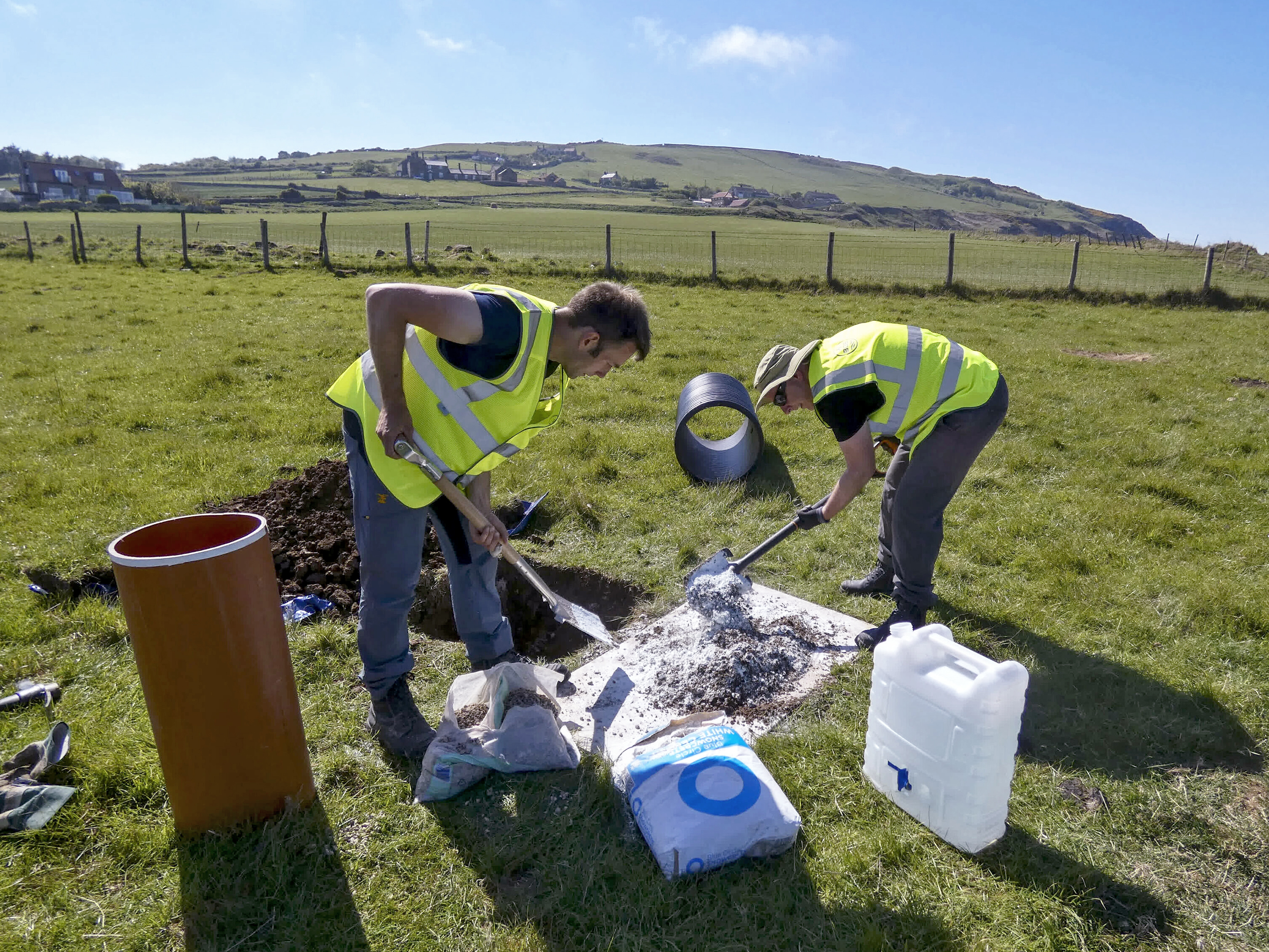From the west coast of Wales to the northern tip of Scotland, a set of ultra-sensitive listening posts are being built around Britain to monitor an invisible shield upon which all life on Earth depends.
The shield in question is the planet’s magnetic field, generated by the churning of molten iron deep beneath our feet.
Most of the time, it is relatively steady. As well as directing compass needles, it protects living things from the dangerous solar radiation that streams through space.
Occasionally, however, the Sun hurls a coronal mass ejection — a violent blast of charged particles — towards Earth. When these particles crash into the field, they push and twist it, a little like wind buffeting a sail, creating ripples and surges that can disrupt power grids, knock out satellites and disable navigation systems. These solar storms also mean we see the northern lights far further south.
Now the British Geological Survey is rolling out one of the world’s most sensitive networks to monitor these changes. It will use five quantum magnetometers, instruments that measure magnetic fields with extraordinary precision.
The regions of the country that see the largest changes in the magnetic field during periods of extreme space weather will be those most at risk of damage to critical infrastructure and interference with satellite navigation systems. In May last year GPS systems on tractors in North America stopped working properly, affecting precision planting. Crops were sown in the wrong places in a glitch estimated to have cost millions of dollars.

The installation of a quantum magnetometer in Boulby, North Yorkshire
UKRI
Each quantum magnetometer contains a cloud of caesium atoms. Each atom behaves like a minuscule spinning top that naturally aligns with magnetic fields. Inside the device they are prodded with lasers, causing them to wobble as they spin, a motion known as precession.
• How to save the world — from asteroids, supervolcanoes and AI
This wobble is not random. Its rate is governed by the rules of quantum mechanics: there is a fundamental relationship between the atom’s properties and the external magnetic field.
By watching how quickly they wobble, the device can detect even the faintest changes in the field. The result is a sensor so sensitive it could, in theory, pick up the whisper of magnetism generated by a human brain.
Five British-made quantum magnetometers are being installed across the country: in Aberystwyth, Boulby in North Yorkshire, Blickling in Norfolk, Chilbolton in Hampshire, and Thurso in the Highlands. They will complement three existing geomagnetic observatories and give the UK full national coverage for the first time.

One of the quantum magnetometers will be installed near Aberystwyth
GETTY
“We are incredibly excited to be able to study the magnetic field around the UK in greater detail than ever before,” Dr Ciarán Beggan, a geophysicist at the British Geological Survey, said. “The installation of the five new quantum magnetometers will help to fill in the gaps between the existing observatories and will improve our vision of the changes taking place during extreme magnetic storms.”
• Weather Eye: Solar storms provide both problem and prophecy
The network will allow scientists to map magnetic storms with unprecedented granularity, capturing the small scale ripples and embayments that sweep across the UK during extreme events.
“During these storms, the magnetic field can change rapidly in different locations. Until now, we didn’t have the detail to see that,” Beggan said. “With the new sensors, we can make improved maps of the magnetic field as these storms unfold, and understand where different parts of the country are most affected.”
The quantum magnetometers were developed by the University of Strathclyde and the Rutherford Appleton Laboratory under the UK National Quantum Technologies Programme. Unlike earlier laboratory-bound sensors, they are robust enough for long-term deployment in the field.

Members of the project at the installation of a quantum magnetometer in Chilbolton in Hampshire
UKRI
Beyond protecting infrastructure, the network could improve navigation. Highly detailed magnetic field maps could supplement GPS, providing a potential fallback if satellite signals are lost or distorted during solar storms. In the future this could extend to magnetic-based navigation for aircraft.
“These new measurements will greatly enhance our understanding of how extreme magnetic storms impact different parts of the country,” Beggan said. “It means society will have access to the advice and information needed to understand where we are vulnerable and to make informed decisions on how to mitigate against them.”

